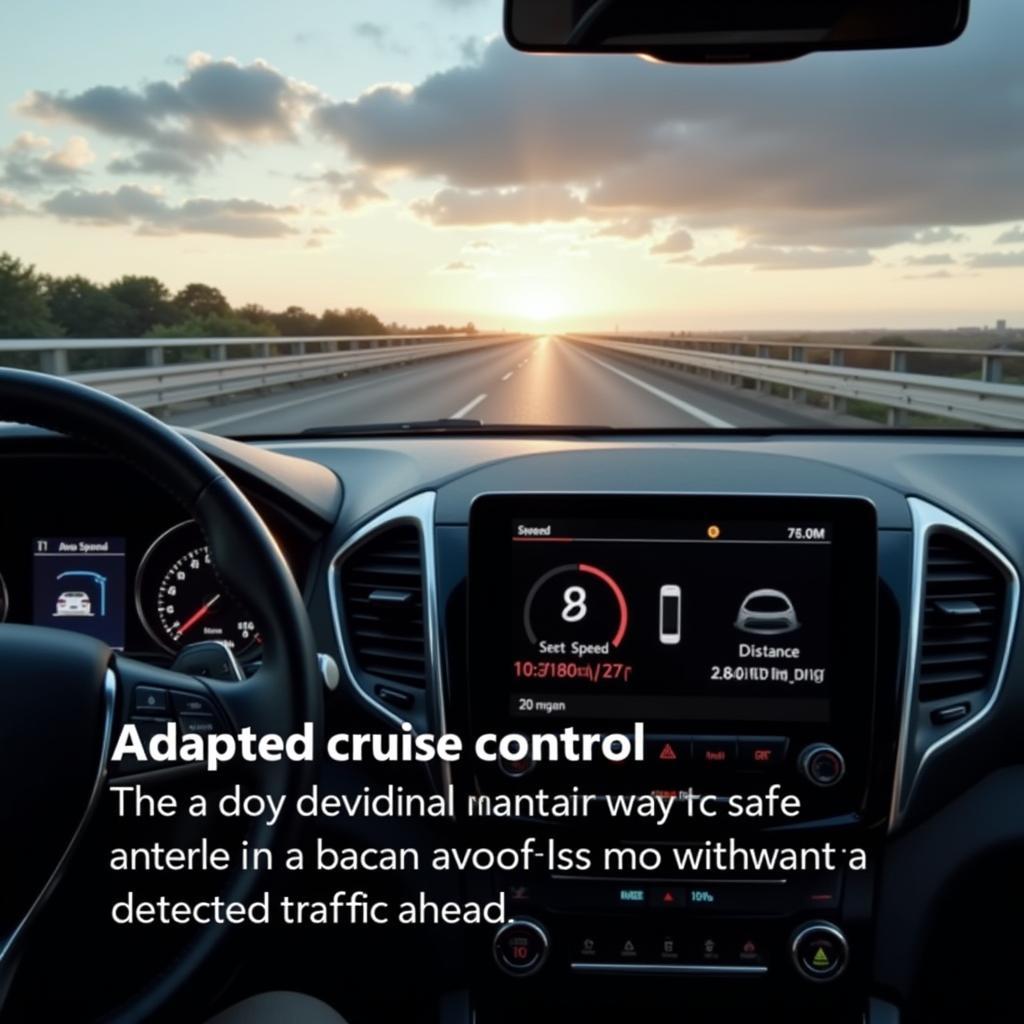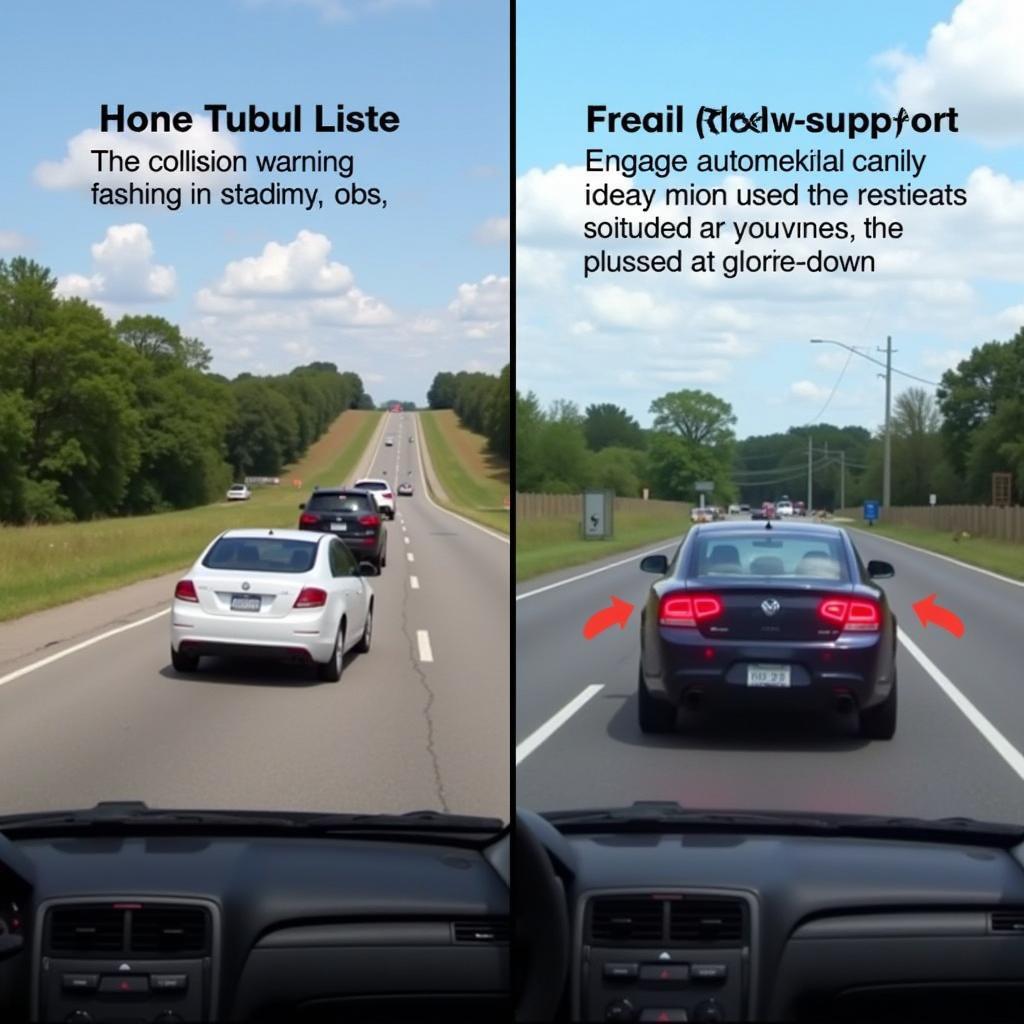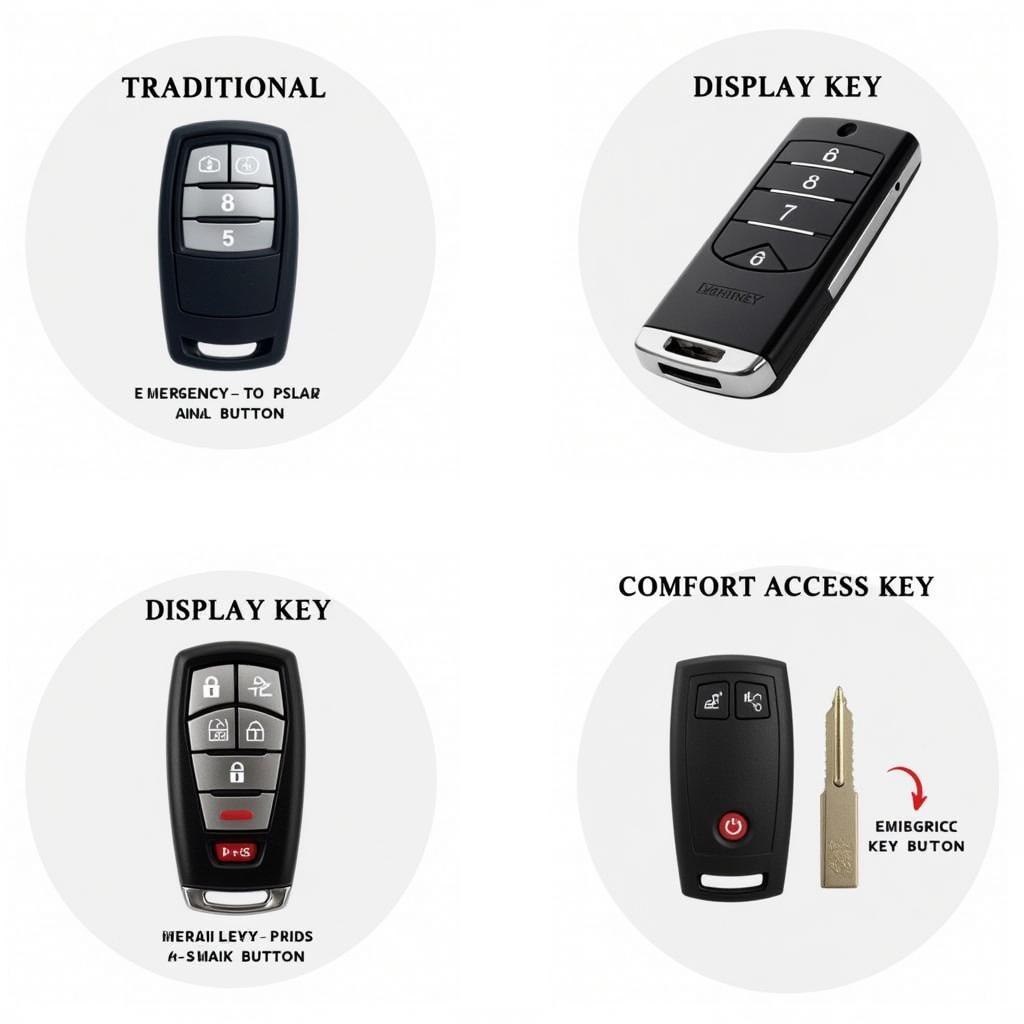Adaptive cruise control (ACC) and collision warning with brake support are advanced driver-assistance systems (ADAS) designed to enhance safety and driving comfort. While they offer significant benefits, understanding their functions, limitations, and potential issues is crucial for drivers to utilize them effectively and safely.
 Adaptive Cruise Control System in Action
Adaptive Cruise Control System in Action
How Adaptive Cruise Control Works
Unlike traditional cruise control, which maintains a constant speed set by the driver, ACC uses radar or cameras to monitor the distance to the vehicle in front. It automatically adjusts the vehicle’s speed, accelerating or decelerating as needed to maintain a preset following distance. This feature proves particularly useful in heavy traffic, reducing driver fatigue and improving traffic flow.
Collision Warning with Brake Support: A Safety Net
Collision warning systems, often integrated with ACC, employ sensors to detect potential frontal collisions. When a risk is identified, the system alerts the driver through visual, audible, or haptic warnings. Brake support takes it a step further: if the driver doesn’t react promptly to the warning, the system can automatically apply the brakes to mitigate the severity of the impact or even prevent a collision.
 Collision Warning System Engaging Brake Support
Collision Warning System Engaging Brake Support
Common Issues and Troubleshooting
While ADAS technologies offer significant safety benefits, they are not without limitations and can encounter issues:
- Sensor Malfunctions: Obstructions like dirt, snow, or ice can interfere with sensor readings. Regular cleaning and ensuring clear lines of sight for the sensors are crucial.
- Software Glitches: Like any software, ACC and collision warning systems can experience glitches. Regular software updates from the vehicle manufacturer can address these issues.
- False Warnings: In certain situations, such as sharp curves or hilly terrain, the systems may issue false warnings. Understanding these limitations can prevent unnecessary driver alarm.
- System Incompatibility: Aftermarket installations or modifications can sometimes lead to incompatibility issues with the ADAS. It’s crucial to consult with certified professionals for any modifications.
Remote Diagnostics and Software Solutions
Advancements in automotive technology have paved the way for remote diagnostics and software solutions for ADAS issues.
smart brake support15 with collision warning
Through specialized equipment and software, technicians can remotely access a vehicle’s onboard computer to diagnose problems, reprogram modules, and even install software updates – often resolving issues without the need for a physical visit to a service center.
FAQs about Adaptive Cruise Control and Collision Warning Systems:
- Can I use adaptive cruise control in all traffic conditions? While ACC enhances driving comfort in heavy traffic, it’s generally not recommended for stop-and-go traffic or on roads with sharp curves.
- Does collision warning with brake support replace regular braking? No, this system assists drivers, but it’s not a substitute for attentive driving and proper braking techniques. Always remain alert and ready to take control.
- What should I do if my ADAS warning lights come on? While some warnings might be due to temporary sensor obstructions, persistent warnings require immediate attention. Contacting a certified technician or dealership is recommended.
- Can I install aftermarket adaptive cruise control on my older car? While aftermarket options exist, they might not integrate seamlessly with the vehicle’s existing systems. It’s crucial to consult with professionals about compatibility and safety implications.
- How often should I have my ADAS systems checked? It’s advisable to have your ADAS systems inspected at least once a year or as part of your vehicle’s regular maintenance schedule.
Staying Ahead with ADAS Technology
Adaptive cruise control and collision warning with brake support are prime examples of how technology is transforming the automotive industry, making driving safer and less stressful. Understanding their functionalities and limitations empowers drivers to utilize these systems effectively, maximizing their benefits for a smoother and safer driving experience.

